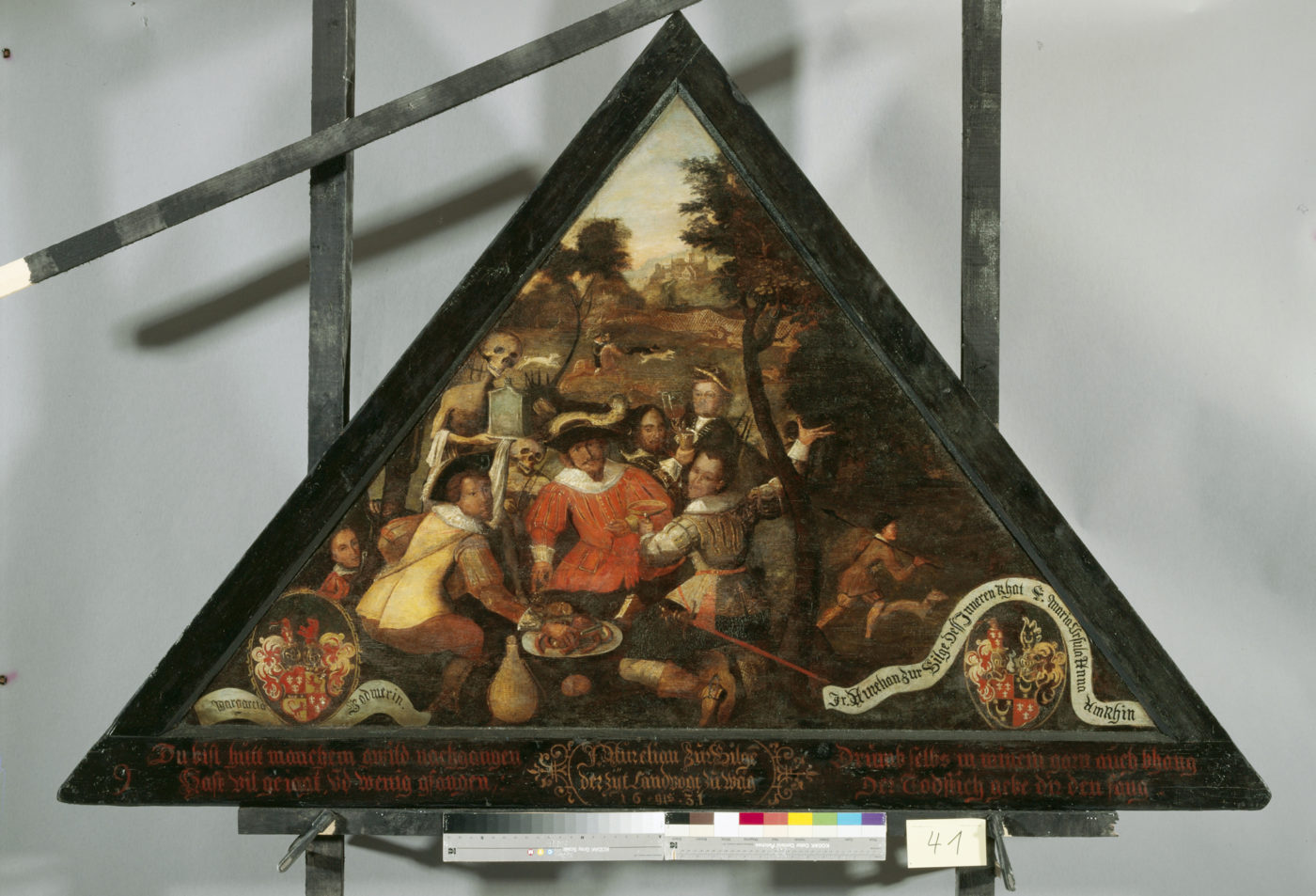Cycles of paintings in a rare form
The three cycles of paintings of Lucerne’s wooden bridges are unique in the world. Picture stories in public spaces and triangular paintings are rare in the history of art. How these cycles of over 460 paintings in all were planned and executed is also unusual.
The approach taken was developed around 1550 when the first cycle of paintings on the Court Bridge was created. The City Council – in this case the ecclesiastical and secular authorities – decided to furnish the Court Bridge with paintings. They were to hang in the gables, where they would be protected from the elements, and tell churchgoers biblical stories.
Pictures from the Court Bridge’s cycle of paintings




A public-private partnership
The City Council paid for a small number of paintings itself. It also selected the developer for the content of the paintings, the composer of the verses and the painters. Council members’ families were then invited to sponsor paintings, choose from a given set of themes for the pictures, designate a painter and pay for the paintings. In exchange, the bottom corners of the panels would bear their name and the family’s coat of arms. Thirty years later, all the around 240 paintings had been completed.
So well received were the results that shortly afterwards a second cycle for the Chapel Bridge was embarked upon. The City Council stipulated expressly that the sponsors had to choose themes from a list and commission the paintings, and that the concept behind the cycle could not be changed. Finally, the last cycle of paintings for the Chaff Bridge was created in the same way and completed around 1637.
wooden bridges.
Composition with main and secondary scenes
The themes are depicted on the panels in such a way that the triangular shape of the paintings is used creatively. The main scene is in the foreground. At the top of the triangle is an architectural perspective or a distant landscape. In the more dramatic depictions, the main figure assumes a dominant position at the tip of the triangle. Besides the main action, there are often smaller secondary scenes that are set back, or the same figures may appear several times.
Two to four lines of verse on the black picture frames explain the theme, though the content of the verse does not always match the image. The verse writers obviously did not always confer closely with the painters.


The verse writers obviously did not always confer closely with the painters.Heinz Horat, art historian and author

Pictures from the Chapel Bridge’s cycle of paintings





Pictures from the Chaff Bridge’s cycle of paintings







